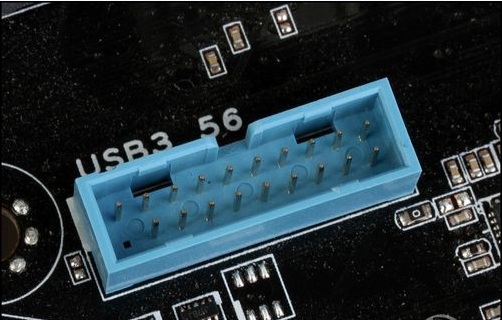USB3.0 began to spread in the host computer, stable transmission performance and speed of transmission speeds to received the majority of users of praise, this article will the concept of computer chassis USB3.0, installation, maintenance and other do a brief explanation.
Before we know about USB3.0, we first understand the concept of USB..
USB is the abbreviation for Serial Bus Universal in English. The meaning of the Chinese language is "general serial bus" ".It is a new type of interface technology which is applied in computer field, including hardware, structure and communication protocol..As early as 1995, there have been personal computers with the USB interface, but due to the lack of software and hardware devices, these personal computers USB interface are unused.
After 1998, with the Microsoft Windows 98 built-in USB support module, the USB support hot swappable, namely in the advantages, the increasing number of USB device, USB interface gradually entered the practical stage.In recent years, with the popularity of the PC, USB has gradually become the standard interface of PC and USB..At the end of the host and the newly launched personal computer is almost 100% support USB; and in the peripheral end, use the USB interface equipment is growing, such as digital camera, scanner, joystick, tapes and floppy, image equipment, printers, keyboards, mouse and so on.
USB2.0 is a general term, there are two norms, namely USB1.1 and USB2.0.
USB1.1 is the common USB specification, the transmission rate of its high-speed mode is 12Mbps, the transmission rate of the low speed mode is 1.5Mbps.
Note: here is B Bit, 1MB/s (MB / s) =8MBPS (megabits per second), 12Mbps=1.5MB/s.At present, the home low-end scanner is mainly USB interface type.
The USB2.0 specification is evolved from the USB1.1 specification.:
1, the transmission rate reached 480Mbps, converted to MB for 60MB/s, enough to meet the rate of the majority of peripherals
2, USB 2 in the enhanced host controller interface (EHCI) defined a USB 1.1 compatible with the architecture, which can be USB 2 driver USB 1.1 devices
3, USB wire, plug and so on attachments can also be used directly
That is, all devices that support USB 1.1 can be used directly on the interface of the USB 2 without having to worry about compatibility issues.USB2.0 interface as shown below:
USB3.0 introduction
USB 3.0, is also thought to be SuperSpeedUSB -- for those functions and PC or audio / various devices connected to a high frequency equipment provides a standard interface, and can be fully compatible with USB3.0 following the USB interface, but computer only installation support USB3.0 related hardware equipment to be able to use the USB3.0!From the keyboard to the high throughput disk drive, all kinds of peripherals can use this low cost interface for smooth running plug and play connection, the user basically do not bother to deal with.USB 3 provides several enhancements to the following:
It greatly improves the bandwidth of up to 5Gbps -- full duplex (USB2.0 480Mbps half duplex) - to achieve better power management to enables the host to an external device to provide more power, so as to realize the USB of expand functions, including battery charging, LED lighting and mini fan application.
The host can make faster recognition device.
The new protocol enables higher data processing efficiency.
The USB3.0 can transfer large capacity files (e.g. HD movies) at the maximum storage rate limited by the memory.
The interface of USB3.0 in the motherboard is not consistent with the traditional DIY, USB2.0 should pay attention to:
USB3.0 interface as shown below:

USB3.0 interface on the motherboard as below:

